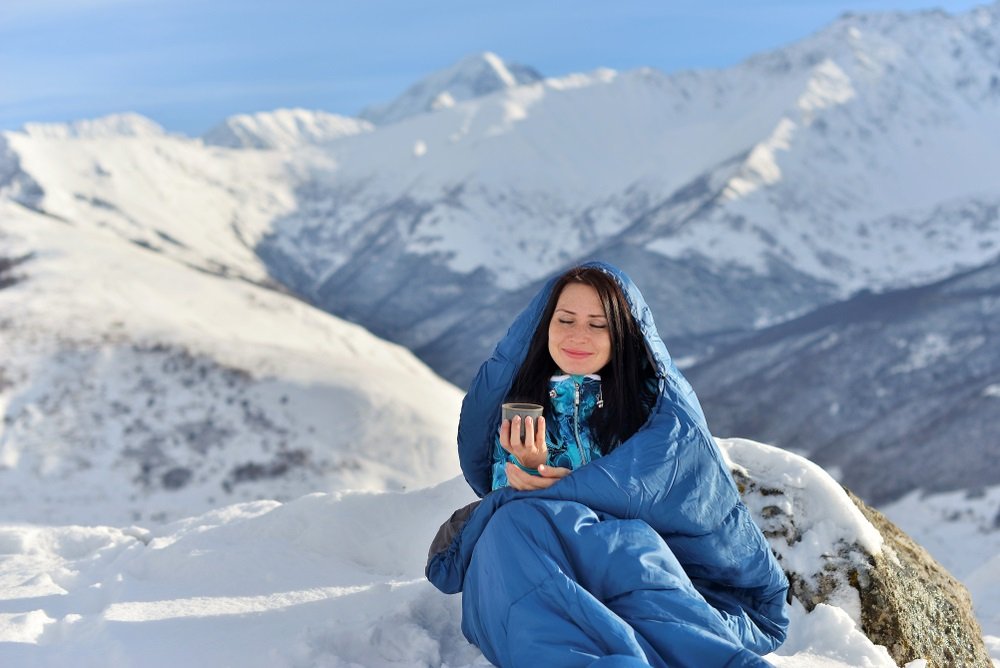When the temperature drops, having the right sleeping bag can make all the difference between a cozy night under the stars and a frigid, sleepless ordeal. Whether you’re planning a winter camping trip or just want to be prepared for cold nights, finding the best sleeping bag is crucial.
You might even find yourself searching online for “sleeping bags for sale near me” to ensure you’re ready for your next adventure.
TL;DR – Quick Tips for Selecting a Cold Weather Sleeping Bag
- Temperature Rating: Choose a bag rated lower than the coldest temperature you’ll face.
- Insulation: Decide between down (lightweight, compressible) and synthetic (better when wet, more affordable).
- Shape: Mummy bags for warmth, rectangular for space.
- Weight: Consider the trade-off between weight and packability.
- Features: Look for draft tubes, hoods, and inner pockets for added comfort.
By keeping these tips in mind, you can ensure that your next cold weather camping trip is as warm and cozy as possible. Happy camping!
What to Look For in Cold Weather Sleeping Bags
1. Temperature Ratings
One of the most important factors to consider is the temperature rating of the sleeping bag. This rating indicates the lowest temperature at which the bag will keep you warm:
- Comfort Rating: The temperature at which a cold sleeper might feel comfortable.
- Lower Limit: The lowest temperature a warm sleeper might feel comfortable.
- Extreme Rating: The minimum temperature at which the bag will keep you alive, but not necessarily comfortable.
Tip: Always choose a bag with a temperature rating lower than the coldest temperature you expect to encounter.
2. Insulation Type
Sleeping bags come with different types of insulation, each with its own benefits:
- Down Insulation: Known for its lightweight and excellent warmth-to-weight ratio. However, it can lose its insulating properties when wet.
- Synthetic Insulation: Provides good insulation even when wet and is usually less expensive. It tends to be bulkier and heavier than down.
Comparison Table: Down vs. Synthetic Insulation
| Feature | Down Insulation | Synthetic Insulation |
| Warmth-to-Weight Ratio | High | Moderate |
| Performance When Wet | Poor | Good |
| Packability | Excellent | Fair |
| Price | Higher | Lower |
3. Shape and Fit
The shape of the sleeping bag can affect its warmth and comfort:
- Mummy Bags: Tapered design to reduce heat loss, snug fit.
- Rectangular Bags: Offer more room to move but can be less efficient at retaining heat.
- Semi-Rectangular: A balance between warmth and space.
Pro Tip: Choose a mummy bag for extreme cold and a rectangular bag if you prioritize comfort over warmth.

4. Weight and Packability
For backpackers, the weight and how well the sleeping bag compresses are crucial:
- Ultralight Bags: Ideal for backpacking, often made with down insulation.
- Heavier Bags: Suitable for car camping where weight is less of a concern.
Remember: A lighter bag is easier to carry but may be more expensive.
5. Additional Features
Look for these extra features to enhance your sleeping experience:
- Draft Tubes and Collars: Prevent cold air from entering through zippers and openings.
- Hood: Helps retain heat around your head.
- Zipper Style: Double zippers can improve ventilation and ease of use.
- Inner Pockets: Convenient for storing small items like a phone or flashlight.
Conclusion
Investing in the right cold weather sleeping bag is essential for a comfortable and safe outdoor experience. By considering factors like temperature ratings, insulation type, shape, weight, and additional features, you can find the perfect bag to keep you warm on your adventures.Ready to find your perfect sleeping bag? Check out local stores and online options for “sleeping bags for sale near me” to get started.


